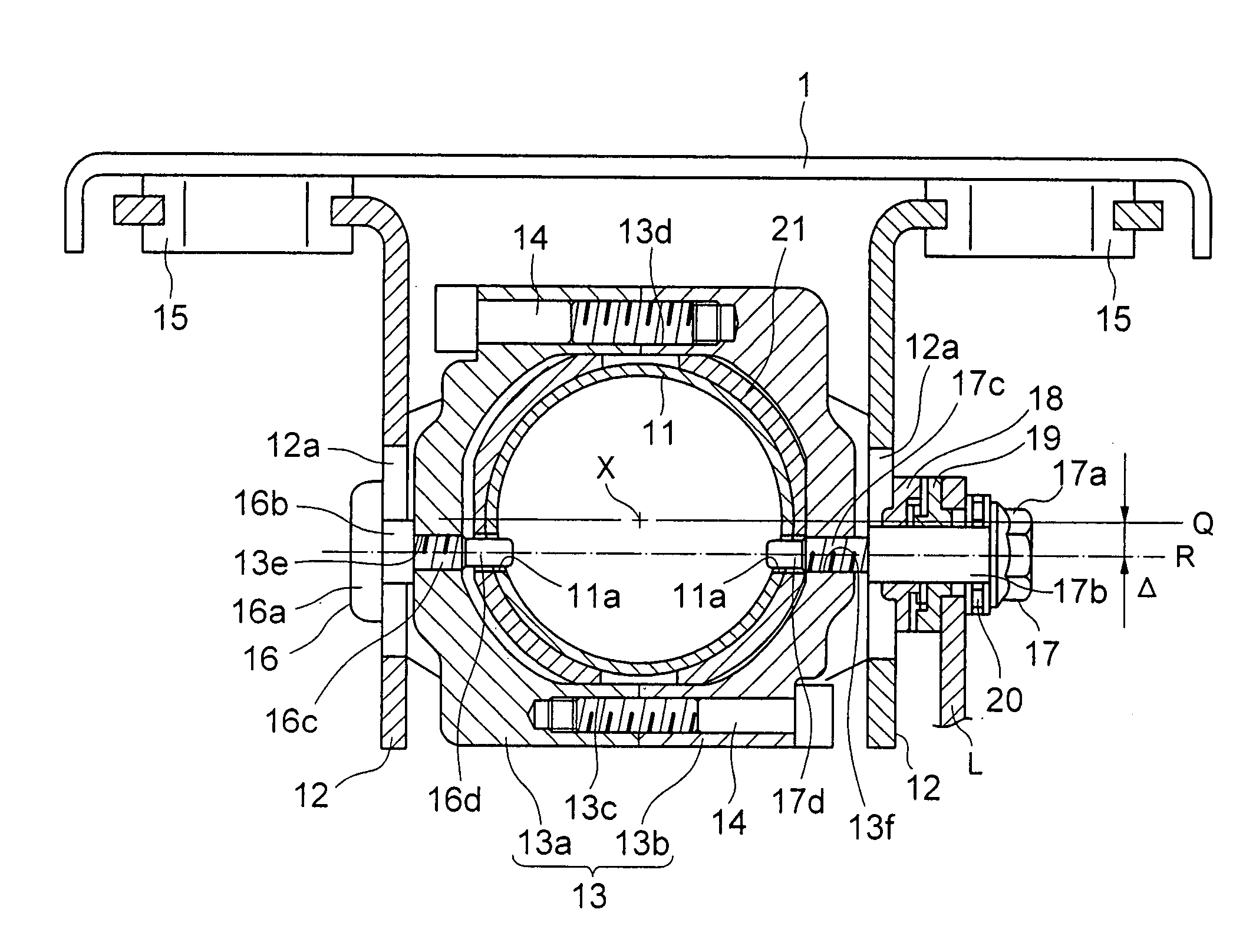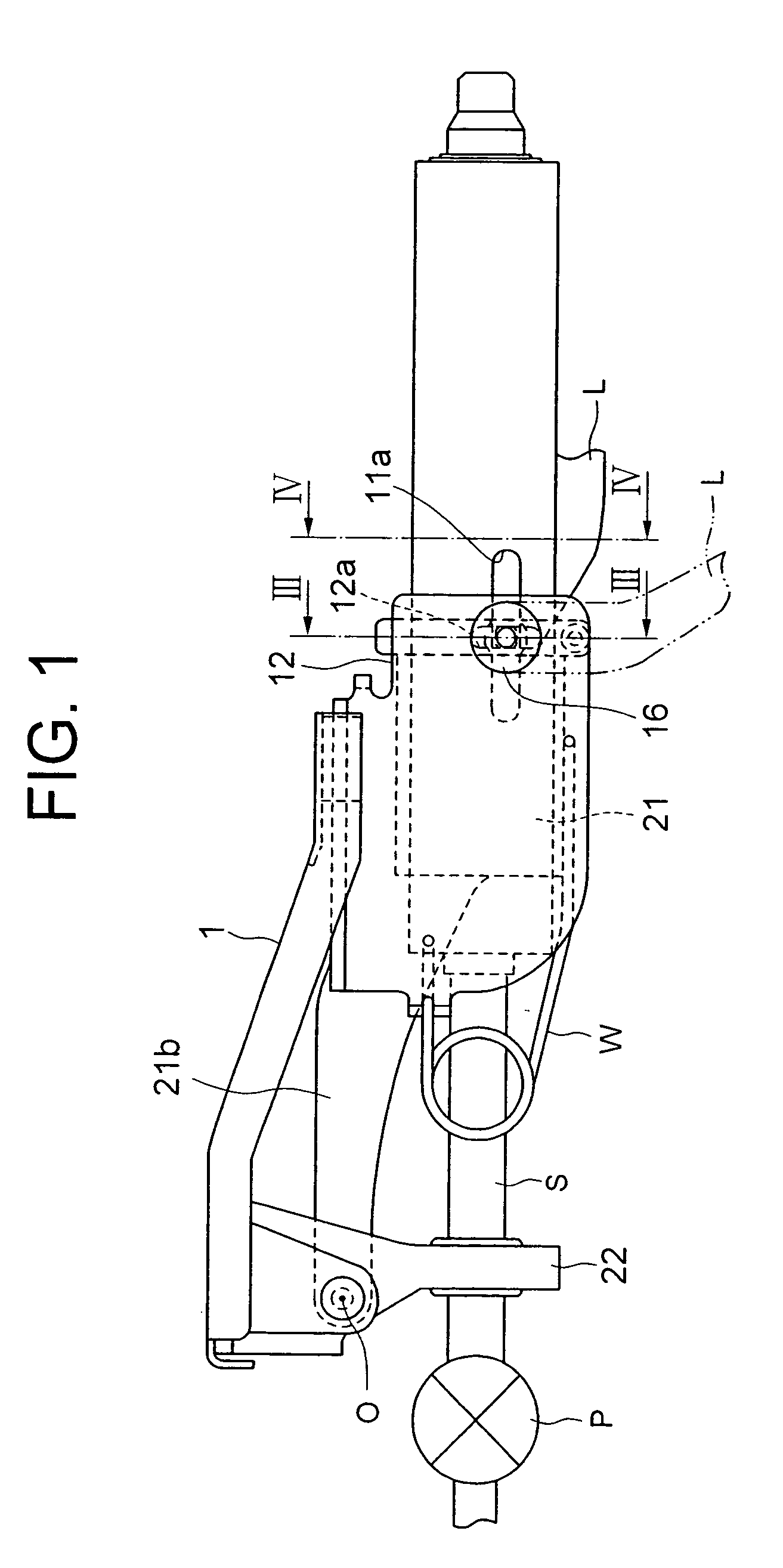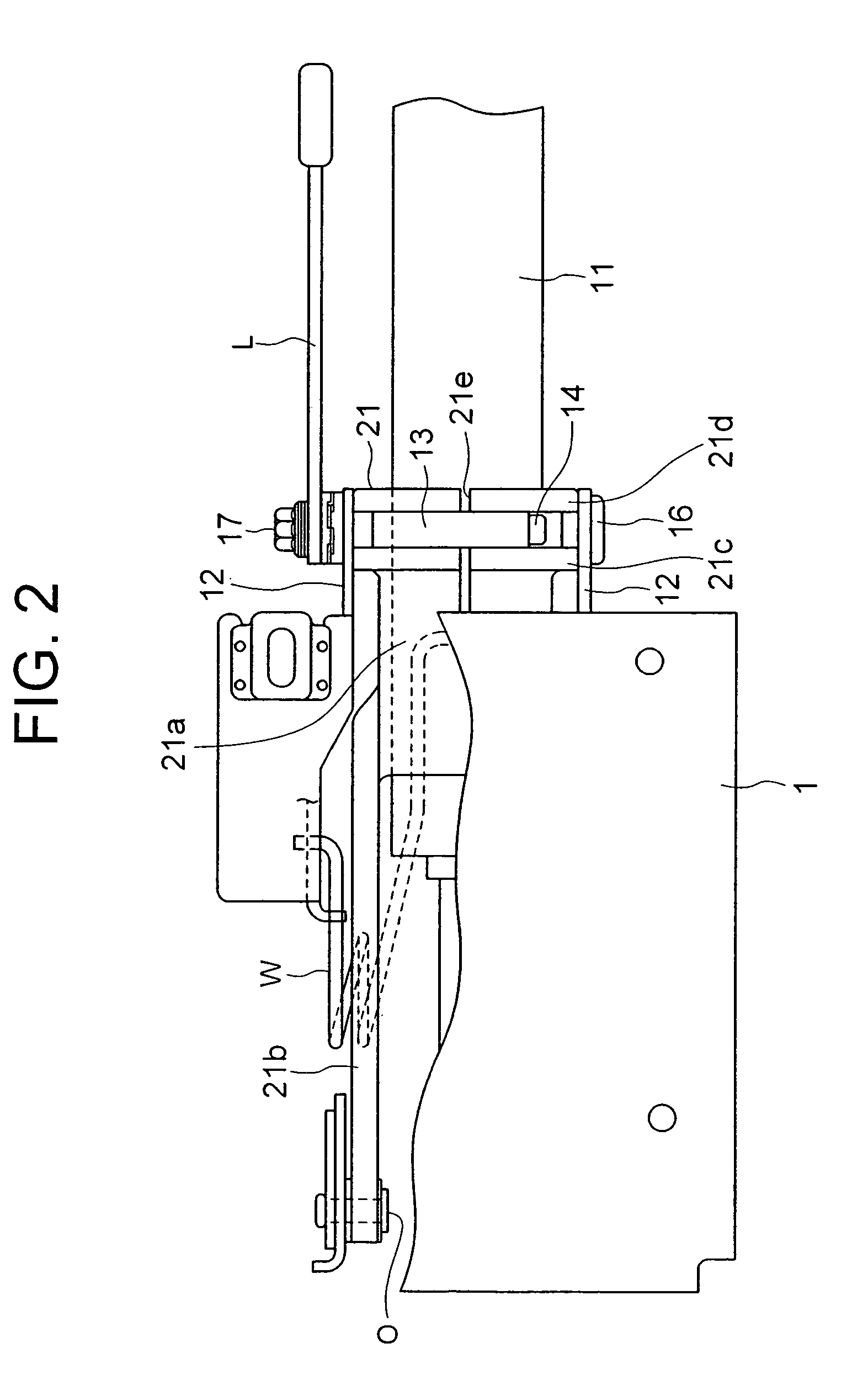Steering device
a steering device and tilting technology, applied in the direction of steering columns, steering parts, vehicle components, etc., can solve the problems of axis deviation of the steering shaft, affecting the operation of the steering column,
- Summary
- Abstract
- Description
- Claims
- Application Information
AI Technical Summary
Benefits of technology
Problems solved by technology
Method used
Image
Examples
first embodiment
[0031]In the following, a description will be given of a tilt / telescopic type steering apparatus according to embodiments of the present invention with reference to the drawings. FIG. 1 is a side view of the tilt / telescopic type steering apparatus according to the present invention. FIG. 2 is a top view of the steering apparatus shown in FIG. 1. FIG. 3 is a view showing the configuration in FIG. 1, cut off by the line III-III as viewed in the arrow direction, and FIG. 4 is a view showing the configuration in FIG. 1, cut off by the line IV-IV as viewed in the arrow direction. A steering shaft is omitted in the respective figures. FIG. 5 is a bottom view of an end part of an outer column, showing the shape of a slit 21e described below.
[0032]Referring to FIG. 3, two pieces of brackets 12 each composed of a plate material bent in an L-shape, are attached through a pair of release capsules 15 to a top plate 1 secured to an unillustrated car body. A plate thickness of each of the bracket...
second embodiment
[0050]FIG. 8 is a view, similar to FIG. 7, of a tilt / telescopic type steering apparatus according to the present invention. The present embodiment is different from the above-described embodiment merely in the point in which the slit 21e of the outer column 21′ is provided only at the lower side, and thus common components other than that are marked with the same numerals and symbols, the descriptions of which are omitted.
[0051]In the present embodiment, since the outer column 21′ does not have an upper slit, when a pressing force is applied to the outer column 21′ from the both sides in FIG. 8, flange parts 21c, 21d are deformed to close the lower slit 21e with a fulcrum point P3 as a center, thereby making it possible to hold the inner column 11.
[0052]Here, in the comparative example, shown in FIG. 6, in which the centers of the fixing members 16, 17 intersect the axis line of the inner column 11, assuming that a pressing force, which is given by the fixing members 16, 17 necessar...
third embodiment
[0055]FIG. 9 is a view, similar to FIG. 3, of a tilt / telescopic type steering apparatus according to the present invention. In the present embodiment, a line R connecting centers of the fixing members 16′, 17′ is shifted upward in FIG. 9 with respect to the axis line X of the inner column 11. Also, the fixing members 16′, 17′ are not provided with telescopic guided portions, the ends thereof are not inserted in the outer column 21′ and the inner column 11′. Accordingly, it is not necessary to provide the outer column 21′ and the inner column 11′ with telescopic grooves, respectively. The other components are common with those of the structure shown in FIG. 3, thus they are marked with the same numerals and symbols, and the descriptions thereof are omitted.
[0056]The present invention has been explained in depth so far with reference to the embodiments. The present invention should not, however, be construed as limited to the embodiments described above and can be, as a matter of cour...
PUM
 Login to View More
Login to View More Abstract
Description
Claims
Application Information
 Login to View More
Login to View More - R&D
- Intellectual Property
- Life Sciences
- Materials
- Tech Scout
- Unparalleled Data Quality
- Higher Quality Content
- 60% Fewer Hallucinations
Browse by: Latest US Patents, China's latest patents, Technical Efficacy Thesaurus, Application Domain, Technology Topic, Popular Technical Reports.
© 2025 PatSnap. All rights reserved.Legal|Privacy policy|Modern Slavery Act Transparency Statement|Sitemap|About US| Contact US: help@patsnap.com



